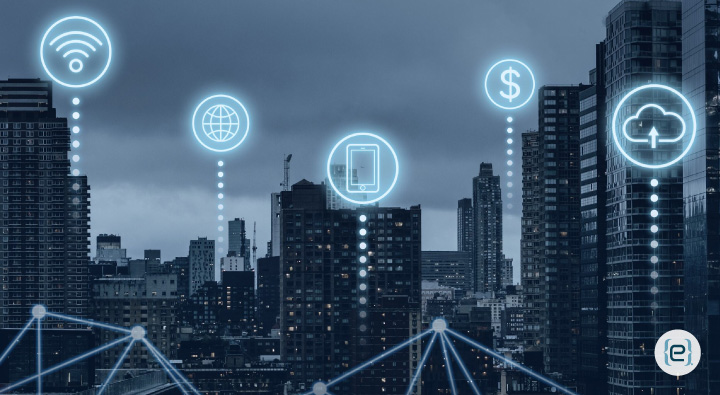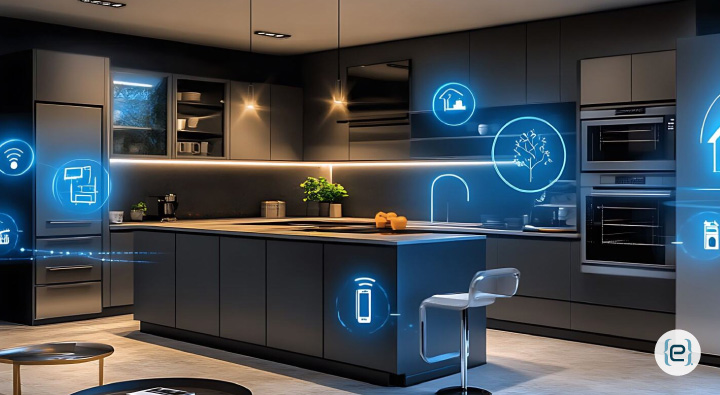The Internet of Things (IoT): Transforming Everyday Life


The “Internet of Things” (IoT) is embedding our everyday objects with sensors, software, and internet connectivity. This network of connected things collects and shares information about your environment, enabling smart homes, businesses, cities, and industries. IoT is changing the way you live, from fitness bands to smart cars and factories.
What is IoT: Internet of Things?
At its core, IoT connects machines like home devices, industrial machinery, or health-monitoring implants to the internet to share data. These “things” contain sensors, processors, and communications modules, allowing them to automatically collect and transmit data. IoT enhances efficiency, automation, and user experiences across the board.
How Does IoT Work?
Sensors & Actuators: These gather real-time data like temperature, motion, or location. A smart thermostat illustrates this, recording and managing temperature based on input parameters.
Connectivity: Data is sent via Wi-Fi, Bluetooth, cellular networks, or specialized protocols like Zigbee / LoRa.
Cloud Platforms and Processing: Data is shipped to cloud servers for processing, enabling different statistical operations to generate insights or take actions.
UI (User Interface): Through an app, dashboard, or voice assistant, you can observe activity and set statuses as needed.


Applications for IoT Across Industries
Smart Homes: Smart speakers, thermostats, cameras, and lights make your homes more convenient, safe, and energy-efficient. Appliances can be controlled via apps or voice assistants like Alexa and Google Home.
Healthcare (IoMT): Wearable health monitors, smart pills, and IoMT (Internet of Medical Things) connected medical equipment provide essential data like vital signs, supporting telemedicine. IoT in healthcare helps monitor equipment use and patients’ health status remotely. [Learn more about AI-driven patient care].
Industry and Manufacturing: IoT systems in the Industrial Internet of Things (IIoT) optimize production lines with predictive maintenance and automation. Machine sensors detect problems early, reducing downtime and maintenance costs. [Explore cloud-driven manufacturing success].
Smart Cities: IoT technology revolutionizes urban life with smart traffic lights, waste management systems, and energy grids. Connected sensors monitor parking space availability, easing drivers’ search for spots. [Discover cybersecurity in municipalities].
Retail: Retailers use IoT for real-time inventory tracking, supply chain management, and personalized shopping experiences. Smart shelves alert managers when stock is low, enabling faster inventory processing to the POS system. [Find out how IT strategies for retail can benefit your business].
Benefits of IoT
- Increased Efficiency: IoT provides automation, reducing human interference and increasing productivity. Predictive maintenance prevents machine downtime due to breakage.
- Enhanced User Experience: Personalized services cater to user needs and behavior. For instance, smart fridges suggest recipes based on your existing ingredients.
- Smarter Use of Data for Decision-Making: IoT systems create big data, enabling precise decision-making through analytical tools. Connected cars optimize traffic flow and enhance safety.
- Cost Savings: Smart energy systems reduce electricity consumption, helping businesses and households lower utility payments.
The Future of IoT
The future of IoT looks bright, with 5G networks, edge computing, and artificial intelligence (AI) advancements on the horizon. IoT devices will gain intelligence, using AI for predictive analytics and automation.
Some exciting trends include:
- Complete management of transportation, healthcare, and energy systems in smart cities.
- Driverless vehicles using IoT sensors for safer navigation.
- Edge computing solutions processing data near the source, reducing latency and improving decision-making.
- AI-powered IoT systems learning from usage to enhance operations.
IoT continues to revolutionize your world. Embrace the future and harness the power of IoT to transform your business. Contact eMazzanti today to learn how we can help you leverage IoT for greater efficiency and innovation.
Recent Posts
Enhancing Your Professional Tone with Emojis in Business Digital Communication
Discover how emojis can enhance your business communication, adding personality and emotion to digital interactions.
Data Breaches Brand Reputation: How Security Slip-ups Can Shatter Consumer Trust
Discover how data breaches impact brand reputation and learn strategies to rebuild trust and strengthen…
Future Communication Technologies: Bridging Worlds with Quantum Leaps and Virtual Handshakes
Explore the future of communication with advancements in AI, 5G, and quantum technologies, reshaping global…
Future Cyber Security Legislation: What to Expect in 2025 and Beyond
Discover the upcoming trends in cyber security legislation, focusing on AI, IoT, and cross-border data…
Cyber Security Customer Data: Shielding Your Digital Gold Mine from Hackers
Protect your business from rising cyber threats with strong cybersecurity practices to safeguard customer data…
Big Data Marketing Strategies: Unlocking Customer Insights for Personalized Campaigns
Discover how big data marketing strategies can unlock customer insights and enhance personalized campaigns for…


